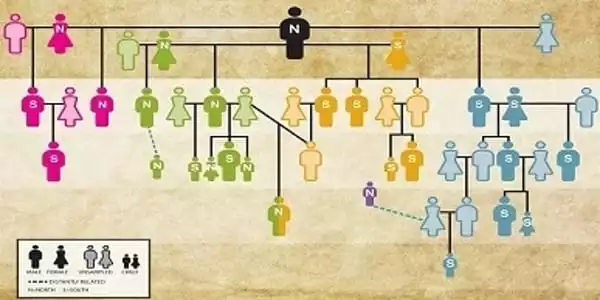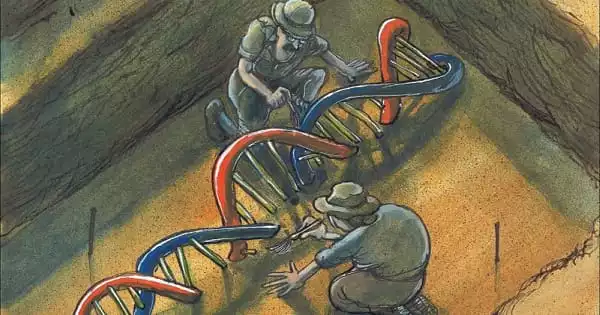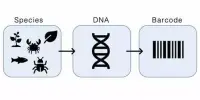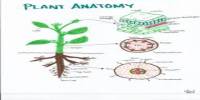The majority of the people buried in one of the best-preserved Neolithic graves in Britain were from five continuous generations of a single extended family, according to ancient DNA analysis. The research team discovered that 27 of the 35 people entombed at Hazleton North long cairn in the Cotswolds-Severn region were close biological relatives by analyzing DNA extracted from their bones and teeth. The tribe lived circa 5700 years ago, between 3700 and 3600 BC, about 100 years after farming was brought to Britain.
Mapping DNA from these individuals’ bones and teeth revealed that 27 of the 35 bodies were close biological relations. This covers five generations of descendants descended from four women who all had children with the same male.
Polygamy and adoption were frequent during this time period, according to the study’s authors. The group lived between 3700 and 3600 BC, around a century after experts believe early humans began farming. The bodies were discovered in a burial monument (a long cairn) on the outskirts of the Cotswolds-Severn region of the United Kingdom.
It is the first study to disclose in such detail how prehistoric families were organized, and the multinational team of archaeologists and geneticists say the findings provide new insights into Neolithic kinship and burial traditions.
This research provides a unique look at kinship in a Neolithic community. The tomb at Hazleton North has two separate chambered areas, one accessed via a northern entrance and the other via a southern entrance, and one remarkable discovery is that each of the two halves of the tomb was originally used to place the remains of the dead from one of two branches of the same family.
Dr. Chris Fowler
The research team, which included archaeologists from Newcastle University in the United Kingdom and geneticists from the University of the Basque Country, the University of Vienna, and Harvard University, discovered that the majority of those buried in the tomb were descended from four women who all had children with the same man.
The cairn at Hazleton North featured two L-shaped chambered compartments placed north and south of the linear structure’s main ‘spine.’ Individuals were buried inside these two-chambered areas after they died, and the research findings indicate that men were generally buried with their father and brothers, implying that descent was patrilineal, with subsequent generations buried at the tomb connected to the first generation entirely through male relatives.
While two of the lineage’s daughters died as children and were buried in the tomb, the absence of adult daughters suggests that their bones were interred in the tombs of male partners with whom they had children, or elsewhere.
Although the right to use the tomb was passed down through patrilineal ties, the choice of whether individuals were buried in the north or south chambered area was initially determined by the first-generation woman from whom they were descended, implying that these first-generation women were socially significant in this community’s memories.

According to the researchers, there is also evidence that ‘stepsons’ were adopted into the lineage – guys whose mother was buried in the tomb but not their real father, and whose mother had offspring with a patriline male. Furthermore, the scientists discovered no evidence that another eight individuals were biological relatives of those in the family tree, suggesting that biological relatedness was not the only requirement for inclusion. However, three of these were women, and it is likely that they had a spouse in the tomb but did not have any children or had daughters who reached adulthood and left the society, thus they are not present in the tomb.
Dr. Chris Fowler of Newcastle University, the study’s first author and chief archaeologist, stated: “This research provides a unique look at kinship in a Neolithic community. The tomb at Hazleton North has two separate chambered areas, one accessed via a northern entrance and the other via a southern entrance, and one remarkable discovery is that each of the two halves of the tomb was originally used to place the remains of the dead from one of two branches of the same family. This has broader implications since it shows that the architectural layout of other Neolithic tombs may reveal information about how kinship functioned at those graves.”
“The excellent DNA preservation at the tomb and the use of the latest technologies in ancient DNA recovery and analysis allowed us to uncover the oldest family tree ever reconstructed and analyze it to understand something profound about the social structure of these ancient groups,” said Iigo Olalde of the University of the Basque Country and Ikerbasque, the study’s lead geneticist and co-first author.
“This study reflects what I think is the future of ancient DNA: one in which archaeologists are able to apply ancient DNA analysis at sufficiently high resolution to address the questions that truly matter to archaeologists,” said David Reich of Harvard University, whose laboratory led the ancient DNA generation.
According to Ron Pinhasi of the University of Vienna: “Just a few years ago, it seemed unthinkable to imagine that we would ever learn about Neolithic family patterns. However, this is only the beginning, and there is no doubt that there is much more to be uncovered from other locations in the United Kingdom, Atlantic France, and other countries.”
















